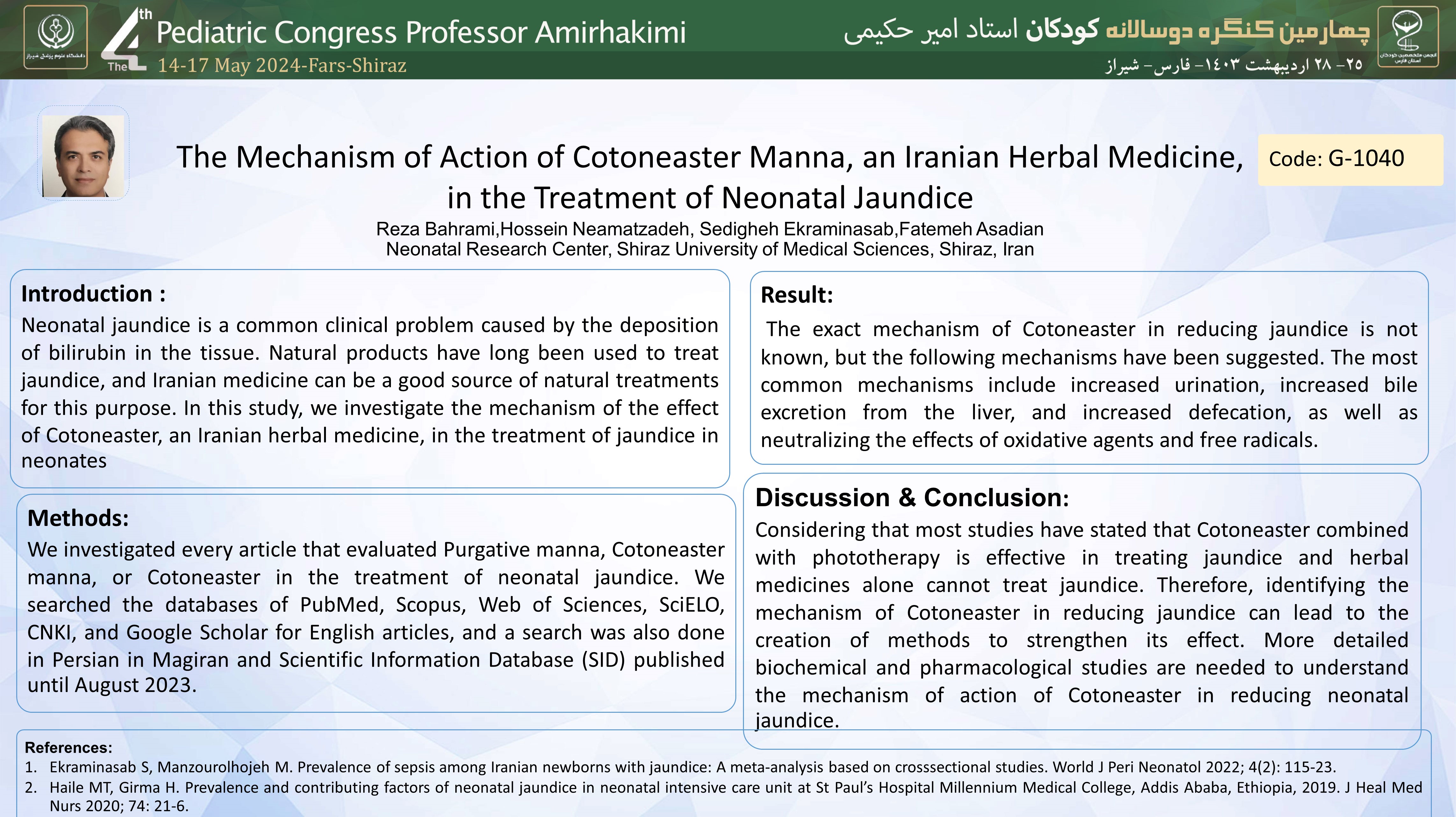مکانیسم عملکرد کوتوناستر مانا، یک داروی گیاهی ایرانی، در درمان زردی نوزادان
کد: G-1040
نویسندگان: ,Reza Bahrami,Hossein Neamatzadeh, Sedigheh Ekraminasab,Fatemeh Asadian © ℗
زمان بندی: زمان بندی نشده!
دانلود: دانلود پوستر
خلاصه مقاله:
خلاصه مقاله
Background: Neonatal jaundice is a common clinical problem caused by the deposition of bilirubin in the tissue. Natural products have long been used to treat jaundice, and Iranian medicine can be a good source of natural treatments for this purpose. In this study, we investigate the mechanism of the effect of Cotoneaster, an Iranian herbal medicine, in the treatment of jaundice in neonates. Methods: We investigated every article that evaluated Purgative manna, Cotoneaster manna, or Cotoneaster in the treatment of neonatal jaundice. We searched the databases of PubMed, Scopus, Web of Sciences, SciELO, CNKI, and Google Scholar for English articles, and a search was also done in Persian in Magiran and Scientific Information Database (SID) published until August 2023. Results: The exact mechanism of Cotoneaster in reducing jaundice is not known, but the following mechanisms have been suggested. The most common mechanisms include increased urination, increased bile excretion from the liver, and increased defecation, as well as neutralizing the effects of oxidative agents and free radicals. Conclusion: Considering that most studies have stated that Cotoneaster combined with phototherapy is effective in treating jaundice and herbal medicines alone cannot treat jaundice. Therefore, identifying the mechanism of Cotoneaster in reducing jaundice can lead to the creation of methods to strengthen its effect. More detailed biochemical and pharmacological studies are needed to understand the mechanism of action of Cotoneaster in reducing neonatal jaundice.
